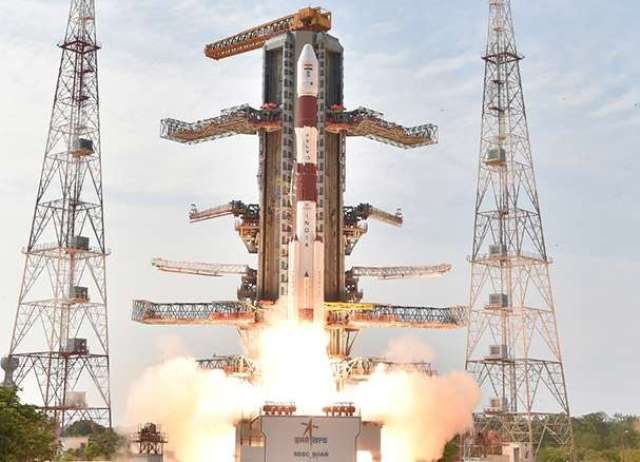
India on Friday put into orbit its own earth observation satellite Cartosat, nano satellite NIUSAT and 29 foreign satellites from 14 countries.
In the process, the Indian Space Research Organisation (ISRO) crossed the double century mark in launching foreign satellites. India started launching foreign satellites in 1999.
The rocket Polar Satellite Launch Vehicle’s (PSLV) main cargo was India’s 712 kg Cartosat-2 series satellite for earth observation with a design life of five years.
This satellite is similar to the earlier Cartosat-2 series.
The other 30 satellites weighing 243 kg were from 14 countries – Austria, Belgium, Britain, Chile, Czech Republic, Finland, France, Germany, Italy, Japan, Latvia, Lithuania, Slovakia, and the US – as well as one Indian nano satellite, NIUSAT.
The whole mission got over in around 23 minutes.
“The mission is successful. All the satellites are in the orbit,” ISRO Chairman A.S. Kiran Kumar said after the launch.
According to Kumar, the Friday mission had many activities that needs fuel and additional margins and hence one should not look at just the total payload carried by a rocket.
He said the next PSLV launch will be for putting into orbit a navigation satellite as a replacement for IRNSS-1A satellite whose three atomic clocks have failed.
Asked about the other upcoming satellite events, Kumar said two communication satellites-GSAT 17 and GSAT 11 will be launched this year.
“Our plan is to have two launches each of GSLV (Geosynchronous Satellite Launch Vehicle) Mark II and Mark III and eight-to-ten launches of PSLV rockets per year,” Kumar said.
He said the PSLV rocket was emerging as a credible satellite launch vehicle in the world and ISRO was trying to build various capabilities in it.
On the GSAT-19 communication satellite launched early this month, Kumar said it had reached its designated orbit and all the payloads had been switched on.
He said that by the end of this month, one more communication satellite will be launched by India.
Kumar said ISRO will continue work on its earth observation, navigation and communication satellites.
According to ISRO officials, the organisation has accelerated the work on developing the semi-cryogenic engine to increase the carrying capacity of heavier rockets geosynchronous satellite launch.
M. Annadurai, Director, ISRO Satellite Centre, said the signals from the satellites launched by the PSLV rocket on Friday were good. He said ISRO’s satellite systems were getting compact.
According to ISRO, the images sent by Cartosat satellite would be useful for cartographic, urban, rural, coastal land use, utility management like road network monitoring, water distribution, creation of land use maps, change detection to bring out geographical and man-made features and various other land information systems and geographical information system applications.
Queried about the strategic use of the images sent by Cartosat, Kumar said the satellite will provide the images and it is for the user agencies to put that to requisite use.
One of the 30 co-passenger satellites is the Indian nano satellite 15 kg NIUSAT belonging to Nooral Islam University, Tamil Nadu.
The satellite will provide multi-spectral imagery for agricultural crop monitoring and disaster management support applications.
Exactly at 9.29 a.m., the PSLV rocket – 44.4 metres tall and weighing 320 tonnes – tore into the morning skies with fierce orange flames at its tail.
Gathering speed every second, the rocket raced towards the sky amidst the cheers of the ISRO officials and the media team at the rocket port here.
The PSLV rocket is a four-stage engine rocket powered by solid and liquid fuel alternatively.
At the rocket mission control room, Indian space scientists were glued to their computer screens watching the rocket escaping the earth’s gravitational pull.
Just over 16 minutes into the flight, the PSLV rocket ejected Cartosat at an altitude of around 510 km. It was followed by NIUSAT and the 29 foreign satellites.
Venkatachari Jagannathan / IANS
